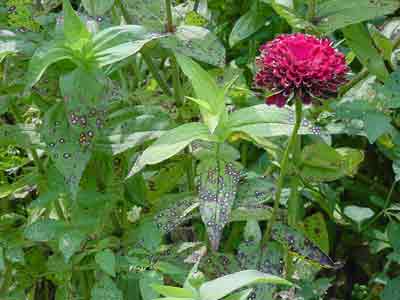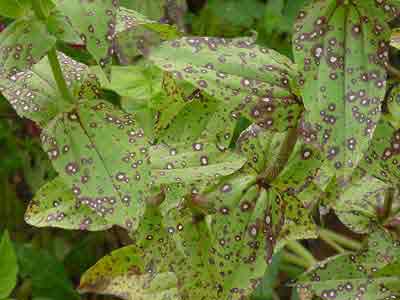Zinnia Problem
go.ncsu.edu/readext?175329
en Español / em Português
El inglés es el idioma de control de esta página. En la medida en que haya algún conflicto entre la traducción al inglés y la traducción, el inglés prevalece.
Al hacer clic en el enlace de traducción se activa un servicio de traducción gratuito para convertir la página al español. Al igual que con cualquier traducción por Internet, la conversión no es sensible al contexto y puede que no traduzca el texto en su significado original. NC State Extension no garantiza la exactitud del texto traducido. Por favor, tenga en cuenta que algunas aplicaciones y/o servicios pueden no funcionar como se espera cuando se traducen.
Português
Inglês é o idioma de controle desta página. Na medida que haja algum conflito entre o texto original em Inglês e a tradução, o Inglês prevalece.
Ao clicar no link de tradução, um serviço gratuito de tradução será ativado para converter a página para o Português. Como em qualquer tradução pela internet, a conversão não é sensivel ao contexto e pode não ocorrer a tradução para o significado orginal. O serviço de Extensão da Carolina do Norte (NC State Extension) não garante a exatidão do texto traduzido. Por favor, observe que algumas funções ou serviços podem não funcionar como esperado após a tradução.
English
English is the controlling language of this page. To the extent there is any conflict between the English text and the translation, English controls.
Clicking on the translation link activates a free translation service to convert the page to Spanish. As with any Internet translation, the conversion is not context-sensitive and may not translate the text to its original meaning. NC State Extension does not guarantee the accuracy of the translated text. Please note that some applications and/or services may not function as expected when translated.
Collapse ▲
Chatham County, August 2003Diagnosis: Alternaria Blight (Alternaria zinniae) Symptoms include large reddish brown or purple spots, at first round to oblong but becoming irregular in shape with gray or tan centers that may drop out leaving a hole. Severely affected leaves brown, dry, and become brittle. Seedlings can be killed when stems are attacked. Alternaria blight usually shows up towards the end of the cutting period for the zinnias. This is a seed-borne disease, so treating seeds can help delay the onset of symptoms. Warm and wet conditions like this summer’s never-ending rains favor disease development. Place your mouse over each photo to read the caption.    This page last updated January 16, 2006.
|


